Author: Patty Tomsky
The “final ruling” on court cards? Welp, it doesn’t exist! But here are some tips and tricks to read them better.
The court cards in the Tarot can confuse newbies and veteran Tarot readers alike. Even if you memorize their meanings, they could indicate either a person with the characteristics of the card or an energy. For example, Knight of Wands could be an adolescent/young adult in the querant’s life. If I saw this person in a reading, I might infer they were a fire sign (an Aries, Sag or Leo) who is often quick to action and decisive.
As an energy, the Knight of Wands could also mean a message or a new opportunity for action. The Wand significator, a “stand in” for the querant in a spread, could also be a fair-haired, blue-eyed person. The suit of Wands also stands for fire sign qualities like charisma, warmth, a love of luxury (Leo), ambition, or a ferocious, goal-oriented person.
Tarot readers can use the court cards as the “significator” to correspond with the querant. For example, the Page, Knight, Queen and King of Cups would be the stand in for a light-brown-haired, green- or hazel-eyed, of the age that corresponded to the court card. (Page=youth; Knight=young adult; Queen=adult mother/yin energy and King=adult patriarchal/father/yang energy). As a person about to show up in the querant’s life, you might use the fire sign method or the appearance, whatever feels right within the reading. If lots of court cards show up, the outcome of the reading in general may be largely within other people’s control. As you may know, every Tarot reader uses the meaning of the card along with their intuition and the placement in the spread to dictate which meaning to use. So, follow your gut!
Divining the Knight
Depending on the reading, you might interpret Knight of Wands, often depicted on a rearing horse, as:
- An Aries, Leo or Sagittarius adolescent influencing the querant or about to arrive on scene
- A young person of hasty and impulsive actions (to be avoided or treated with caution)
- The querant is about to take or did take a hasty or impulsive action. In this case, the card after the Knight of Wands can tell them what likely happens/happened afterward.
- Is the Knight of Wands in the placement in the spread for the future or the resolution? Then this resolution will happen quickly. It also cautions the querant to make sure their actions come from a centered place---this court card tends to mean an unpredictable, volatile, and/or temperamental decision, too.
- Classical meanings include a departure or a move to a new residence
- Just from my experience, I sometimes see this card as a call to energetic action regarding the card after it in a spread.
Elements, Chakras and the Court Cards
As you may know, Tarot suits correspond to the four elements: Earth (pentacles), Air (swords), Fire (wands) and Water (cups). In a reading, they also often correspond to areas of a person’s life. For example, Pentacles relate to career and finances, or business plans. They can also denote qualities of the root chakra—areas in our life that help us gain stability and security.
Chakras are energy centers in the body that relate to specific emotional and spiritual states of being. The chakras correspond to Tarot, Kabbalah and other esoteric disciplines explaining the astral body, our body that is made of spirit and resides inside our physical body. Learning about the chakras helped me immensely while studying Tarot. I really like the work of Anodea Judith—you can get her books at your local library or visit her online.
Swords are air (mental) and communicative endeavors, conflict and the throat chakra of expression. Cups represent relationships, love and are aligned with the heart chakra of emotion and compassion. The wands, as the fire element of action, energy and movement can also represent changes and passions out of control—the yang active energy of decisions made and journeys undertaken. These are vastly simplified explanations, of course, but I encourage you to dive deeper into the elemental/chakra correspondences with Tarot.
You can also think of court cards as a family. The King represents father energy where the Queen is mother energy. The Knight may denote adolescent or young adult energy and the Page, child energy. These are non-binary energies, so the King card denotes not just an older “male” figure but one with a steady influence on the querant, regardless of gender. For example, the King of Pentacles represents a traditional, earthy person—think of the attributes of a Taurus, Capricorn or Virgo—practical, grounded and persevering in nature.
In the Upside Down
When working with the reversals of the court cards, I think often of what “goes wrong” when these elemental energies are out of balance. A reversed King of Pentacles could mean a refusal to look at the practical facts of a situation. If this card is an actual person in the reading, the reversed King in the querant’s life shows up as a possessive, materialistic and corrupt person who is trying to control them.
Likewise, the reverse of the King of Cups can denote emotional instability, a wishy-washy outlook or a person who is overly emotional and will often “vomit” their problems on the querant. The King of Cups reversed can also indicate the presence of an emotional vampire, a taker who offers nothing in the way of emotional support. If you are doing a reading that has a lot to do with creativity, the King of Cups reversed could mean that the flow of creativity is stagnated. If it’s a relationship or love reading, the King of Cups upright represents the most positive of outcomes. Reversed means a heartbreak or a lost connection up ahead.
Kings are the pinnacle of the entire energy journey of the suit. The Aces represent potential and hopeful stirrings—so the Ace of Cups relates to the loving seed of relationship whereas the King shows the fruition of this impulse to join with another human in accord with both people’s inner truth—not necessarily in romance but in a partnership that uncovers the positive and best for each person involved.
Queen for a Day
Queen cards represent the creativity of the suit. Their yin energy is welcoming, forgiving and abundant in all court cards. A Queen of Swords represents the power of the mind (the air element) to nurture the whole person with creative flow, joy and even the beauty of a perfectly solved mathematical equation. As a person, the Queen of Cups will show up with a great meal and a big laugh to cheer you up. She can also take on too much too easily and may often retreat to a dreamland instead of facing up to issues or challenges. Think of Cancer, Pisces and Scorpio’s “shadow” traits of hysteria, delusion, addiction, resentment and revenge. A reversal in the Queen of Cups might herald the danger of sinking into one of these states based on trauma or on difficult circumstances where the querant feels disempowered by life or by their relationships.
Those Crazy Knights
As touched upon earlier, the Knights are the energetic, outward motion of the element in the suit. A Knight of Cups is a new romance or partnership; Knight of Pentacles, a new business venture or a new state of stability; Knight of Swords, a new adventure of the mind or new email/news. I’ve already outlined common meanings of the Knight of Wands, above.
Turning the Page
I’m always heartened when the Page cards come up in a reading. They often represent the querant’s ability to meet the world with the wide-eyed wonder of a child. If the Page comes up reversed, I can often discern a childhood wound that they may be ready to cleanse and forgive.
The Page of Wands is an “eternal messenger” who often denotes an email, text or letter of import. It can also mean an adventure or a new possibility on the horizon. The Page of Swords is an active, dark-eyed, dark-haired young person who may be guarded and secretive or chatty and alert. The Page of Cups is a studious and thoughtful young person; it sometimes announces the birth of a child or a new business venture in the classical interpretation. Finally, the Page of Pentacles denotes a dark-eyed, black-haired young person with very careful, diligent way of being in the world. This “earthy” Page can also be a hopeful and solid decision or a new area of scholarship for the querant.
In Practice
For me, the best way to learn the court cards is to run a number of past-present-future readings and use only the court cards and the Major Arcana. You will be able to see how and when they turn up and, next to the Major Arcana, the energies will be very strong and clear in meaning (especially if you learned the Majors first and best, like I did!). This is a three-card spread, read left to right, with the left=past; middle=present; right=future. Make sure you ask a question that’s really clear, and if this method doesn’t seem to be helping you, try something else.
Tarot is meant to be a form of sacred play and help us deepen our spiritual lives. That means there are as many ways to use them as there are people on the planet. Have fun, take notes in your Writual Tarot Journal and let me know how it goes!




Leave a comment